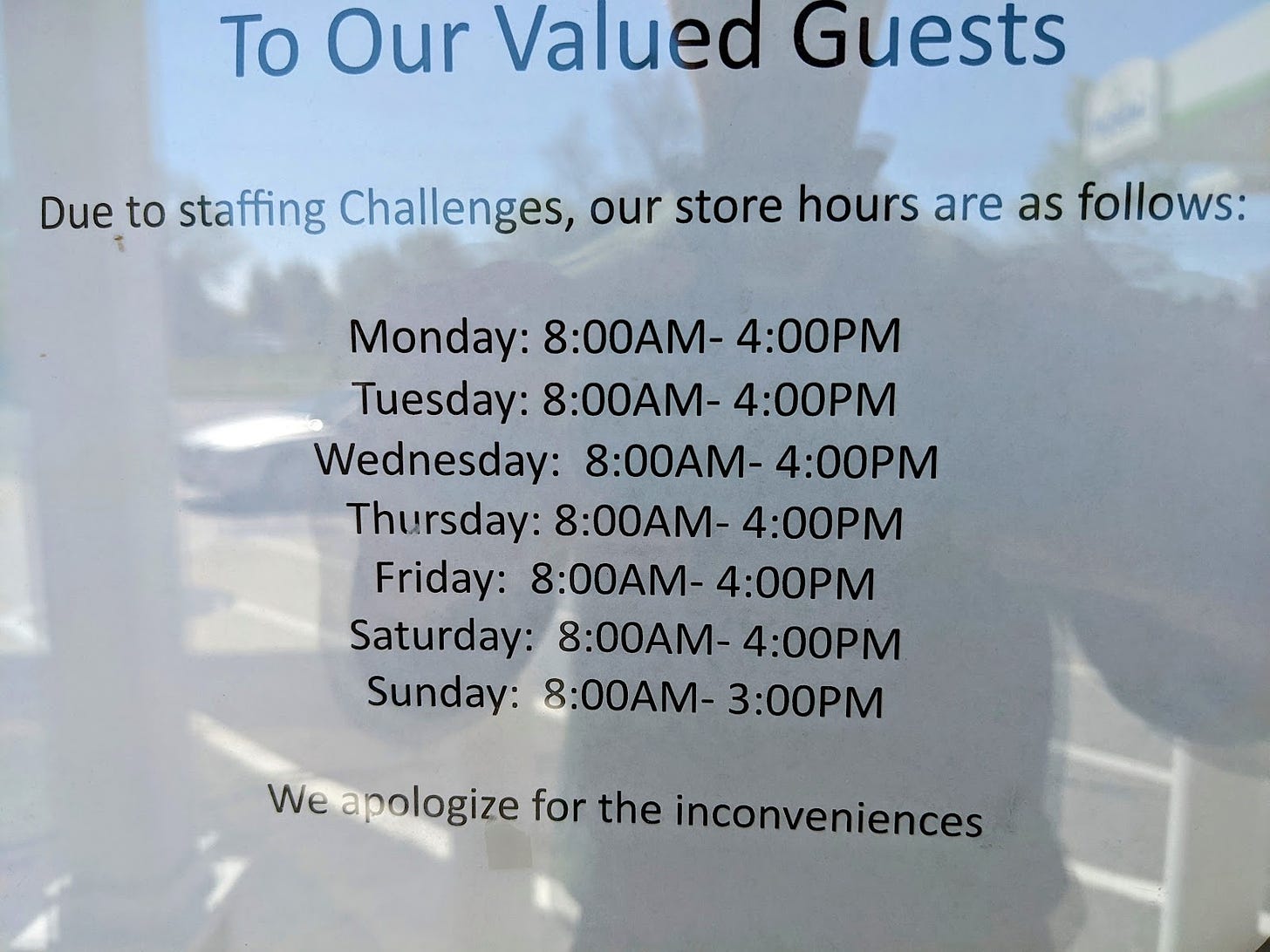This is the first of a two-part essay which argues that the cost of labor is determined differently than other business inputs, and that desperation plays a prominent role in bringing down baseline wages.
No one wants to work anymore. According to an apologetic sign citing “staffing challenges”, our local gas station and mini-mart is no longer open past 4pm. Working a mini-mart is a miserable enough gig that it feels like another example of the national narrative. But most of us remember our supply-and-demand from school. When there isn’t enough of something to go around, the price of that something is supposed to rise until it’s thought of as expensive instead of scarce. One would think that the franchisee of this mini-mart would simply offer progressively higher wages until someone is finally motivated to take the job.
But wages aren’t determined like other business inputs. When a business buys raw materials like steel or plastic or lumber, they do so at prices in the respective markets for those commodities. Prices vary depending on how much material is available and how many buyers are present. Labor could be priced in the same way. But unlike raw materials, workers rent themselves out according to subjective notions of their value to the production process. We ask what a job is “worth”, and working at a gas station isn’t worth much at all. Maybe that’s why the franchisees of our local mini-mart would rather close than raise wages. They might be trying to avoid setting an expensive precedent during a temporary crisis. But there is a second possible explanation.
If labor was priced like other business inputs, it would be much higher. Desperate employees accept lower wages and bring down the baseline price of labor for everyone. And American workers are in rough shape. That’s great news for employers' bottom-line. Think about the swathe of businesses that couldn’t exist if not for the indebtedness and precarity of our working class. Maybe the local mini-mart is one of these businesses, whose razor-thin margins would make it unprofitable if wages were any higher. In any case, the appearance of their sign, and millions of others like it, prove that something fundamental is shifting within our labor market.
Stay tuned for the second part of this essay which argues that minimum wage should be tied to living costs. Anything less is a subsidy for entitled employers.







